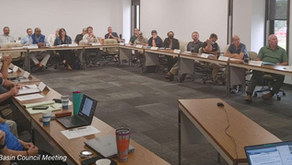Reliability, Availability, or Dependability? Why Dependability Matters Most
- JD Solomon
- Mar 25, 2024
- 3 min read

Reliability, dependability, and availability are key concepts in systems thinking and asset management. The distinctions around reliability and availability are usually most frequent within the reliability and maintainability community. However, improving reliability and availability are most suitable for the dark chambers of design. Most of what we do on the front lines relates to the lesser-used concept of dependability.
Boring (but important) Definitions and Measures
What is Reliability?
Reliability is the probability that an item will perform its intended function for a specified interval under stated conditions. Key aspects of the definition include probability, function, time, and conditions.
From a technical perspective, reliability addresses the period leading up to the first failure in repairable systems.
Reliability is often measured by uptime, failure rate, and mean time between failures (MTBF). In many sectors, downtime can result in significant financial losses or endanger lives. A system with a high MTBF is considered more reliable than one with a low MTBF.
What is Availability?

Availability is the ability of a product (item) to be in a state to perform its designated function under stated conditions at a given time. The definition of availability may include the time to repair (time on the wrenches), preventative and corrective maintenance time, and administrative time (including or not including waiting on parts).
For repairable systems, availability addresses the period following the first failure.
Availability is measured in three different ways.
What is Dependability?
Dependability is the probability that an item will meet its intended function during its mission. Dependability is often underused in R&M circles but is a powerful term usually synonymous with reliability when communicating with decision makers. It is similar to reliability because time and operating conditions are specifically limited to the mission.
Dependability is often measured by mean time to repair (MTTR), the average time a system takes to recover from a failure. A system with a low MTTR is considered more dependable than one with a high MTTR.
Factors that Impact Reliability and Dependability
Except for systems designers and analysts, most decision makers are unaware of the fine points of availability. We’ll discuss the finer aspects of reliability and dependability here.
Factors Impacting Reliability
Design Quality
The design determines a system's reliability. Maintenance can only restore a system to its original state. We must have the right tools for the job.
Environmental Conditions and Operational Stress
Both are part of the reliability definition. In most cases, systems in the filed are less than their intended reliability because their basis of design has changed.
Component Quality
High-quality components are one way to achieve fault avoidance, which is one of the key reliability measures.
Testing and Quality Control
Rigorous testing during development and roll-out is another form of fault avoidance.
Redundancy
Redundancy is a form of fault tolerance that provides switching to backup components. It reduces downtime, failure rates, and MTBF.
Factors Impacting Dependability
Safety Measures
Safety features and protocols contribute to a system's dependability so that it does not harm users or the external environment during mission execution.
Security Measures
Dependable systems incorporate robust physical and cyber security measures to protect against disruption.
Resilience
The ability to recover quickly from disruptions or failures is key to ensuring dependability. Remember dependability is usually measured in terms of mean time to repair (MTTR).
Adaptability
Many definitions of resilience include adapting over time rather than simply bouncing back when under distress. Adaptability is an important aspect of fulfilling an essential mission.
Training and Documentation
Adequate user training and documentation of business processes establish understanding and allow systems to recover quickly if trouble occurs during mission execution.
Feedback Mechanisms
Establishing feedback loops is essential for effective communication. Effective communication is essential for reducing human errors.
Regulatory Compliance
Violations of regulations and standards stop a mission in its tracks. This is especially true in critical industries.
Comparing Reliability and Dependability
The key distinction between reliability and dependability lies in the context of their usage.
Reliability is the more common term and appropriately incorporates system performance from conceptual design through decommissioning.
Dependability represents a deeper level of assurance. It implies that a system meets expectations consistently and is trustworthy in critical situations.
Moving Forward
Reliability, availability, and dependability are key concepts in systems thinking and asset management. Reliability and availability are more common among designers and analysts, but reliability and dependability are commonly used among decision makers and on the front lines. For my money, dependability is most important. After all, that is what we, as practitioners, do most on the front lines.
JD Solomon Inc. provides solutions for program development, asset management, and facilitation at the nexus of facilities, infrastructure, and the environment. Subscribe for monthly updates related to our firm.
JD Solomon is the author of Communicating Reliability, Risk & Resiliency to Decision Makers: How to Get Your Boss’s Boss to Understand and Facilitating with FINESSE: A Guide to Successful Business Solutions.




Comments